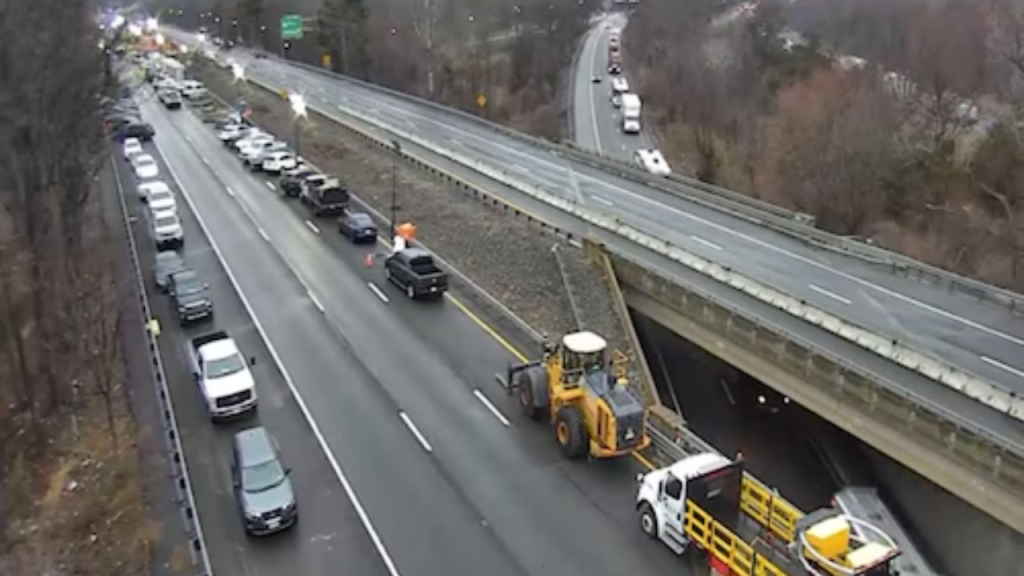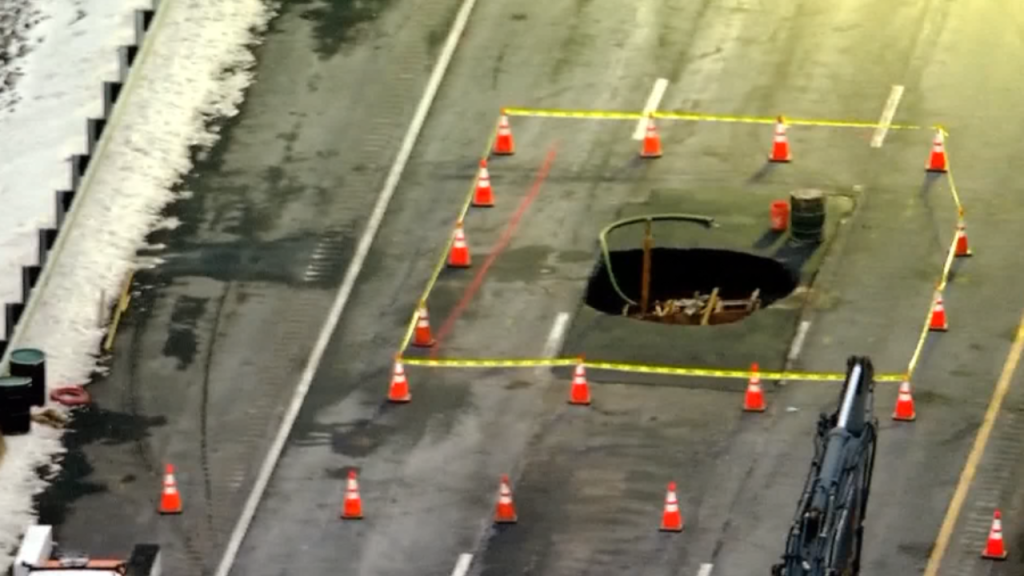
After nearly five months of disruptions caused by a massive sinkhole, two eastbound lanes on Interstate 80 in Wharton, New Jersey, are officially back open. Commuters and officials alike are calling the reopening a “game-changer” for travel and logistics across the region.
The sinkhole first appeared on December 26, 2024, due to the collapse of an abandoned mineshaft beneath the highway — a stark reminder of the area’s deep mining history. The sudden collapse not only halted traffic but also triggered complex repair efforts that involved structural engineers, geologists, and state highway crews working around the clock.
Massive Disruption to a Major Highway
Interstate 80 is one of the state’s key east-west transportation arteries, and the closure of the eastbound lanes caused major detours and congestion across alternate routes. For months, drivers were rerouted via Route 34, creating traffic nightmares for daily commuters and significant delays for freight and logistics companies.
Officials say reopening the lanes is a vital step forward.
We know it’s been a long and frustrating journey for drivers, residents, and business owners,” said a spokesperson from the New Jersey Department of Transportation (NJDOT). “But the safety of everyone on the road had to come first.
According to NJDOT’s official site, crews used ground-penetrating radar to survey the area and discovered additional voids beneath the highway — one of them measuring approximately 15 by 15 feet. These findings forced engineers to expand the repair zone and delay initial reopening plans.
Timeline of Repairs and Closures
- Dec 26, 2024: Sinkhole forms, eastbound lanes shut down.
- Jan–Feb 2025: Initial assessment reveals multiple underground voids.
- Mar 19, 2025: A second smaller sinkhole discovered on the westbound side.
- May 21, 2025: Two eastbound lanes officially reopen at around 10 p.m.
- Next Week: Two westbound lanes are also expected to reopen.
- June 25, 2025: Full restoration of all lanes projected.

Engineering Challenges
The sinkhole was caused by the collapse of an old mineshaft — a hidden danger beneath modern infrastructure. According to geotechnical reports, some of the underground supports had eroded over time due to water infiltration, making the collapse inevitable without intervention.
Construction crews stabilized the area by filling the voids with concrete and reinforced materials, and installed real-time monitoring systems to track any future ground shifts. This type of repair is rare but essential for roadways built over historic mining zones.
Commuter Reactions
The reopening of the lanes brought a wave of relief for locals and daily commuters.
I’ve been sitting in an extra hour of traffic every morning since January,” said Melissa Johnson, a nurse who drives from Dover to Paterson for work. “Seeing the cones gone and the lanes open was like seeing the light at the end of the tunnel.”
Logistics companies also expressed their support, saying that the reopening would save thousands of dollars in fuel and labor costs caused by detours.
Caution Still Advised
Despite the good news, NJDOT warns drivers to remain cautious while passing through the area. The highway is still considered an active work zone, with speed limits reduced to 40 mph. Final restoration and cleanup efforts are ongoing through late June.
Governor’s Response
Governor Phil Murphy praised the swift work of NJDOT and thanked the public for their patience.
This reopening represents more than just two lanes — it’s a major milestone in resilience and public safety,” Murphy stated. “We’re committed to ensuring our infrastructure is prepared for any future challenges.
He also confirmed that additional funding will be allocated to survey other state roads built over potential underground hazards.
